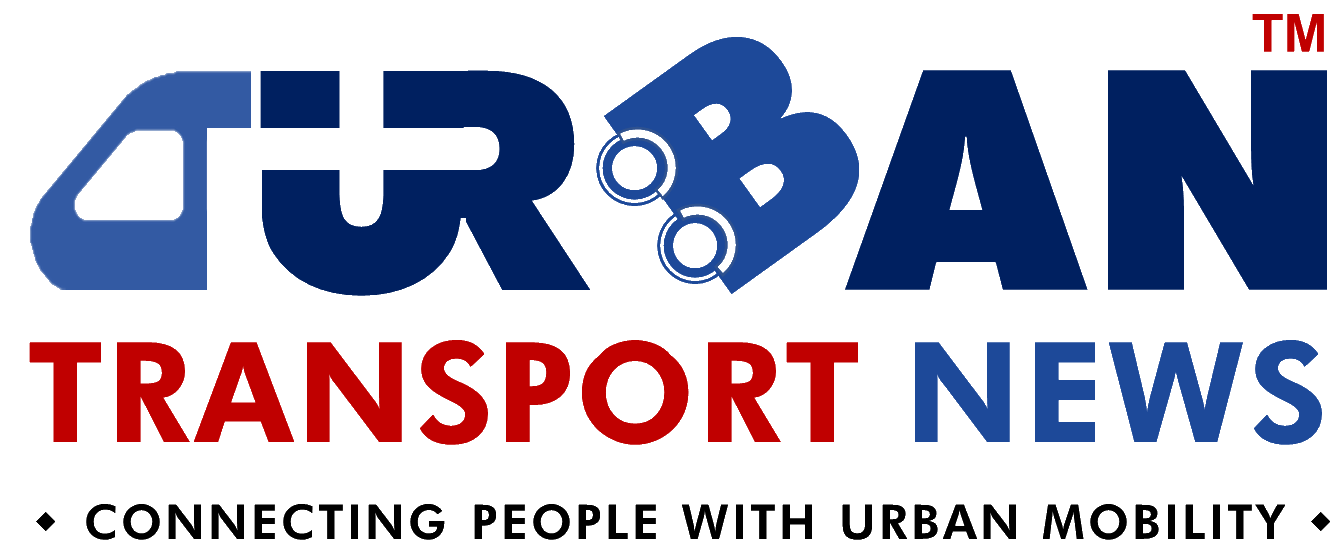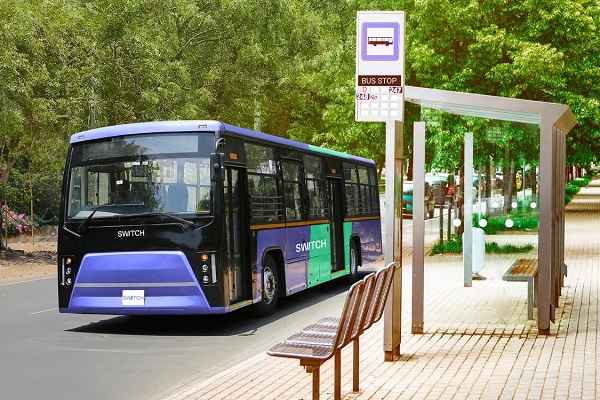 Delhi unveils ambitious Urban Mobility Vision: Luxury Metro Coaches, New Tunnels and Pod Taxi
Delhi unveils ambitious Urban Mobility Vision: Luxury Metro Coaches, New Tunnels and Pod Taxi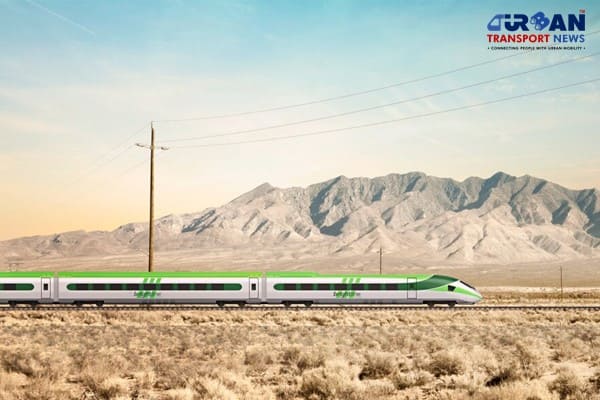 Qatar approves Saudi Rail Link Agreement, Accelerating Gulf Railway Vision 2030
Qatar approves Saudi Rail Link Agreement, Accelerating Gulf Railway Vision 2030 UP Govt plans to introduce Water Metro services in Ayodhya, Varanasi & Prayagraj
UP Govt plans to introduce Water Metro services in Ayodhya, Varanasi & Prayagraj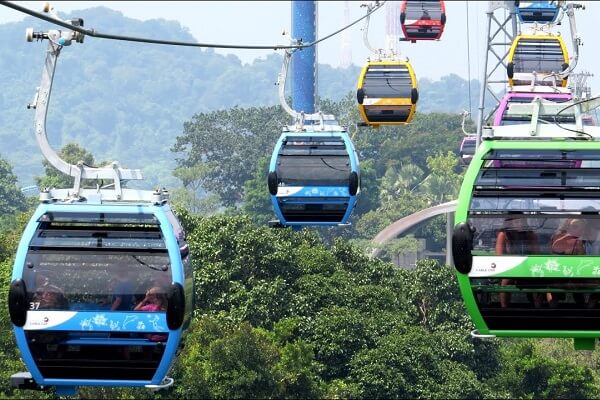 India’s First Urban Ropeway begins Trial Run in Varanasi, Set to carry 1 Lakh passengers daily
India’s First Urban Ropeway begins Trial Run in Varanasi, Set to carry 1 Lakh passengers daily India and Bhutan to Build First-Ever Rail Link: ₹4,033 Cr Project to Boost Regional Connectivity
India and Bhutan to Build First-Ever Rail Link: ₹4,033 Cr Project to Boost Regional Connectivity Patna to launch Eco-Friendly Water Metro; Trial Run soon between Digha and Kangan Ghats
Patna to launch Eco-Friendly Water Metro; Trial Run soon between Digha and Kangan Ghats Air India Group set to launch Flights Operations from Navi Mumbai International Airport
Air India Group set to launch Flights Operations from Navi Mumbai International Airport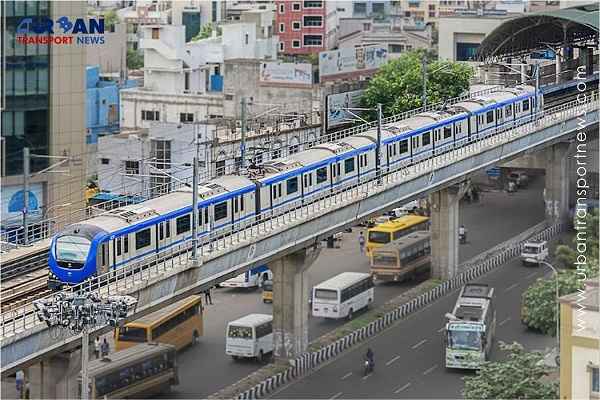 Chennai to launch 25-Year Mobility Plan with Unified QR Ticketing and One-App Transit System
Chennai to launch 25-Year Mobility Plan with Unified QR Ticketing and One-App Transit System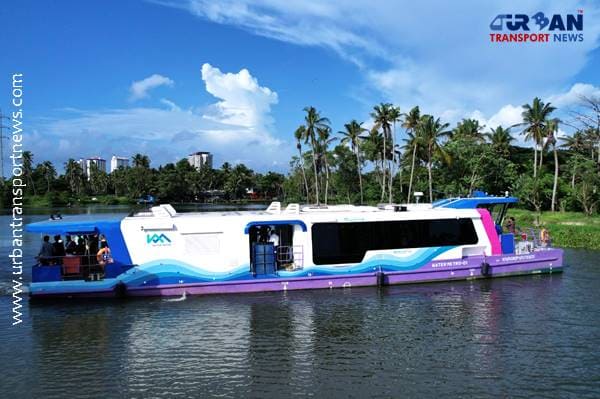 Kochi Metro bags ₹4.4 crore contract to prepare DPR for Mumbai Water Metro Proejct
Kochi Metro bags ₹4.4 crore contract to prepare DPR for Mumbai Water Metro Proejct Navi Mumbai International Airport set for September launch; IndiGo and Akasa Air to lead Operations
Navi Mumbai International Airport set for September launch; IndiGo and Akasa Air to lead Operations
Micromobility: A Sustainable Mobility Solution for Urban Areas
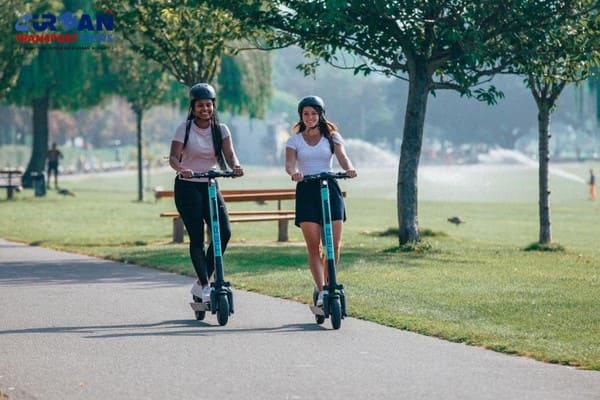
Micromobility solutions have gained significant attention in recent years as cities look for more sustainable and efficient ways to address traffic congestion, reduce pollution, and provide convenient transportation options. Micromobility refers to the transportation trend that involves small, lightweight vehicles, often powered by electricity, for short-distance urban trips.
Micromobility is an emerging field of transportation, referring to trips undertaken by a range of microvehicles. Microvehicles encompass both traditional and emerging types of light vehicles from conventional bicycles and powered-two wheelers, through to e-bikes and e-scooters, e-skateboards and “hoverboards”. Operating speed less than 25 kmph.
Micromobility holds great promise for the world’s traffic-choked cities, and not just as a way to rein in congestion and reduce greenhouse gas emissions . since micromobility provides a hassle-free, eco-friendly, cost-effective, and healthy mode of transportation, it is seen as an ideal solution for the ever-increasing traffic congestion problem on the road.
It’s crucial for leaders to understand why people use micromobility—and why they don’t.
In the context of India, micromobility has been rapidly growing due to its potential to alleviate some of the transportation challenges faced by the country, such as traffic congestion, air pollution, and limited public transportation infrastructure. People use micromobility in Indian cities for a variety of reasons, as these modes of transportation offer several advantages that cater to the unique challenges and needs of urban environments in India. Here are some key points about micromobility in India:
- Last-Mile Connectivity: Micromobility options like electric scooters and bicycles provide a convenient solution for covering short distances that are too far to walk but not far enough to warrant a traditional car or public transport ride. They help bridge the gap between main transportation hubs and final destinations.
- Traffic Congestion: Indian cities often face severe traffic congestion, leading to time-consuming commutes. Micromobility offers a way to navigate through traffic more efficiently, especially during peak hours, making it a faster option for short trips.
- Environmental Concerns: With increasing awareness of environmental issues, many people are choosing micromobility as a greener alternative. Electric scooters and bicycles produce fewer emissions compared to gasoline-powered vehicles, contributing to reduced air pollution and carbon emissions.
- Health and Fitness: Bicycles and electric scooters provide an opportunity for physical activity, promoting a healthier lifestyle. Cycling, in particular, offers cardiovascular benefits and helps reduce sedentary behavior.
- Flexibility: Micromobility options are flexible and can be used on-demand. Users can easily pick up an electric scooter or bicycle from a designated location, ride to their destination, and drop off the vehicle. This flexibility suits the spontaneous nature of short trips.
- Limited Parking: Many Indian cities struggle with a shortage of parking spaces, especially in crowded areas. Micromobility vehicles can be parked in smaller spaces, reducing the need for extensive parking infrastructure.
- Ease of Use: Micromobility vehicles are designed to be user-friendly, even for individuals who might not have prior experience with them. Electric scooters and bicycles are relatively easy to operate, making them accessible to a wide range of people.
- Reduced Noise Pollution: Electric vehicles used in micromobility produce less noise compared to traditional combustion engine vehicles, contributing to quieter and more peaceful urban environments.
- Avoiding Public Transport Crowds: In densely populated cities, some people might opt for micromobility options to avoid crowded public transportation, especially during the ongoing COVID-19 pandemic.
- Electric Scooters and Bicycles: Electric scooters and bicycles have become increasingly popular in Indian cities. These vehicles offer a convenient and eco-friendly mode of transportation for short distances. Several companies have entered the market, offering app-based rental services that allow users to easily locate, unlock, and ride these vehicles for a nominal fee.
- App-Based Rentals: Various startups have introduced app-based rental services for electric scooters and bicycles. Users can download an app, locate nearby vehicles, and unlock them using QR codes. This model has gained traction as it provides last-mile connectivity and reduces the need for personal vehicle ownership.
- Ride-Sharing and Sharing Economy: Micromobility has also found its place in the sharing economy. Startups offer shared electric scooter and bicycle services, allowing users to rent vehicles for short trips and drop them off at convenient locations
Micromobility is gaining momentum in India as a promising solution to address urban transportation challenges. While there are hurdles to overcome, the growing interest in electric scooters and bicycles, coupled with government support and local innovation, indicates a positive trajectory for micromobility's future in the country.
Despite the significant growth of micro-mobility services, there have been significant concerns raised by users related to infrastructure, standardization, safety, and ease of use.
Why do people prefer sustainable micro-mobility in Indian cities?
Sustainable micro mobility is crucial for addressing a range of challenges faced by India's urban areas. As the country experiences rapid urbanization, population growth, and increasing environmental concerns, promoting sustainable micro mobility becomes essential for several reasons:
- Traffic Congestion
- City Planning
- Green House Emission
- First & Lastmile Connectivity
- Health & Fitness
- Affordability
- Transport Culture & User Behaviour
- Employment Opportunity
- Reduced Energy Dependence
- Innovation & Technology
The need for sustainable micromobility in India is driven by the pressing issues of traffic congestion, air pollution, greenhouse gas emissions, and the broader goal of creating livable, healthy, and sustainable cities. Implementing and supporting such solutions can lead to positive impacts on public health, the environment, and overall urban quality of life.
Growth of micro-mobility in India
The Global mocromibility platform market size is likely to be valued at $6500 Mn in 2023 and can reach up to 23000 Mn USD by 2033 expecting CAGR of 14%.
As per mckinsey analysis, By 2030, the shared-micromobility market could reach $50 billion to $90 billion, a roughly 40 percent increase each year between 2019 and 2030. Shared micromobility could account for around 10 percent of the overall shared-mobility market in 2030.
As per BCG analysis, Across all types of vehicles, subscriptions are the fastest-growing segment in the micromobility market, with CAGR projected to exceed 30% over the next decade. In the sharing segments, all modes except bikes are expected to have 10% to 30% CAGR over the next decade.
According to FMI forecast, India is estimated to expand at a CAGR of 22.4%, because of:
- Government focus on E- vehicle Transformation
- Digital control and accessibility for communication
As per FMI analysis, Revenue in the E-Scooter-sharing market is projected to reach US$18.750m in 2023. Revenue is expected to show an annual growth rate (CAGR 2023-2027) of 18.55%, resulting in a projected market volume of US$37.040m by 2027. The user penetration is projected to be 0.1% in 2023 and 0.2% by 2027. The average revenue per user (ARPU) is expected to amount to US$13.26.
Major challenges in the adoption of micro-mobility solutions in India
Implementing successful micromobility solutions comes with several challenges that need to be addressed for these systems to be effective, safe, and sustainable. Some of the major challenges in micro mobility solutions include:
- Infrastructure: Developing dedicated bike lanes, safe cycling paths, and proper parking infrastructure for micromobility vehicles can be challenging, especially in cities with limited space and existing road infrastructure.
- Local Context: Mobility Solutions should be tailored to the specific needs and challenges of each city or region. Factors such as climate, urban density, existing infrastructure, and cultural preferences should be considered when implementing micromobility initiatives.
- Safety: Ensuring the safety of micromobility users, including riders and pedestrians, is a significant challenge. Sharing the road with larger vehicles, addressing the risks of accidents, and promoting responsible riding behavior are crucial aspects.
- Regulation and Policy: Clear regulations and policies are needed to govern the use of micromobility vehicles on roads and sidewalks. Striking a balance between encouraging micromobility adoption and ensuring safety and order can be complex.
- Integration with Public Transport: Coordinating micromobility solutions with existing public transportation networks to provide seamless first-mile and last-mile connectivity requires collaboration between different transportation providers and government bodies.
- Parking and Space Management: Proper parking and storage solutions for micromobility vehicles are essential. However, finding suitable spaces for parking bicycles and scooters in crowded urban areas can be challenging.
- Theft and Vandalism: Micromobility vehicles are susceptible to theft and vandalism, which can impact the availability and reliability of the service. Implementing security measures and educating users about proper locking techniques are crucial.
- Charging Infrastructure: In the case of electric micromobility, establishing a reliable and accessible network of charging stations is a challenge. Charging infrastructure needs to be distributed strategically to meet user demand.
- Battery Life and Range: The limited range of electric micromobility vehicles and concerns about battery life can affect user confidence. Ensuring that vehicles have sufficient range to cover users' intended trips is important.
- User Education: Many users might be unfamiliar with riding electric scooters or bicycles, and education on safe usage, traffic rules, and responsible parking is essential to prevent accidents and conflicts.
- Equity and Accessibility: Micromobility solutions need to be accessible to all members of the community, regardless of income or physical ability. Ensuring equity in access and addressing potential barriers is a challenge.
- Environmental Impact: While micromobility is often considered more environmentally friendly, the manufacturing and disposal of vehicles can still have environmental implications. Sustainable materials and recycling programs need to be considered.
- User Behavior: Encouraging responsible user behavior, including following traffic rules, respecting pedestrians, and parking vehicles properly, can be a challenge, especially in densely populated urban areas.
- Economic Viability: Creating a sustainable business model for micromobility operators can be challenging due to factors like operational costs, pricing structures, and competition from other transportation modes.
- Resistance to Change: Micromobility requires a cultural shift towards accepting and adopting these new modes of transportation. Overcoming resistance to change and encouraging people to try these options can be difficult.
Addressing these challenges requires collaboration between local governments, transportation providers, technology companies, urban planners, and the community. Tailoring solutions to the specific needs of each city and continuously adapting strategies based on user feedback and evolving technologies is essential for the success of micromobility solutions.
Key Policy initiatives and efforts in India to promote sustainable micro mobility in India:
- FAME Scheme: The Faster Adoption and Manufacturing of Hybrid and Electric Vehicles (FAME) scheme is a government initiative aimed at promoting the adoption of electric vehicles (EVs), including electric two-wheelers and electric rickshaws. The scheme offers incentives to manufacturers and buyers of electric vehicles to encourage their use.
- Subsidies and Incentives: Various states in India were offering subsidies and incentives to promote the adoption of electric vehicles. This includes subsidies on the purchase price, reduced road taxes, and lower registration fees for electric two-wheelers and other micromobility vehicles.
- Charging Infrastructure: The government was working on establishing a network of electric vehicle charging infrastructure across the country, including charging stations for electric two-wheelers and three-wheelers. This would support the charging needs of micromobility users.
- Smart Cities Mission: Under the Smart Cities Mission, many Indian cities were focusing on developing dedicated cycling lanes, pedestrian-friendly zones, and improved infrastructure for micromobility. This initiative aimed to make cities more conducive to sustainable transportation options.
- Rental and Sharing Services Regulation: Some cities were considering or implementing regulations to govern electric scooter and bicycle sharing services. These regulations aimed to ensure proper parking, user safety, and equitable access to micromobility services.
- Public Awareness Campaigns: The government and various organizations were conducting public awareness campaigns to educate people about the benefits of micromobility and the environmental advantages of using electric vehicles.
- Research and Development Support: Policies were being developed to encourage research and development in the field of electric mobility, including micromobility. This would lead to technological advancements and improvements in battery technology, range, and performance.
- Integration with Public Transport: Some cities were working on integrating micromobility services with existing public transportation systems. This involves creating seamless connectivity between different modes of transportation, making it easier for users to combine multiple options for their journeys.
- National Electric Mobility Mission Plan (NEMMP): The NEMMP aimed to promote the adoption of electric vehicles, including electric two-wheelers and rickshaws. It set goals for EV market penetration and identified strategies to achieve these goals.
- Local Government Initiatives: Many local governments were taking initiatives to develop dedicated bike lanes, pedestrian-friendly zones, and traffic-calming measures to improve the safety and appeal of micromobility options
- Community Engagement: Engaging with local communities, stakeholders, and potential users is crucial for a successful sustainable micromobility program. Addressing concerns, getting feedback, and involving the community in planning can enhance acceptance and adoption.
Although a good number of initiatives are started by Government Authorities. However, it’s crucial for policymakers to understand who uses micromobility, and why—and, just as important, what keeps people from using it. Users are not monolithic. Without segmenting them, decision makers are missing important differences in users’ practices and needs that have major implications on urban transportation planning decisions the forms of micromobility currently in use, and probed consumers’ habits, perceptions, and expectations. mismatch we see today in many markets between micro-mobility goals and realities.
Keshav Kumar is an experienced professional having more than 19 years of experience in the development of sustainable Transport Infrastructure. Well-versed in 360-degree development of sustainable public infrastructure and focused on railroad and mobility solutions. Develop large-scale Railways (High Speed, Semi-High Speed & Conventional), Metro, LRT, other modes of passenger carrying systems, and Road Projects. At preset working as Vice President- SYSTEM and Operations in SYSTRA India.
